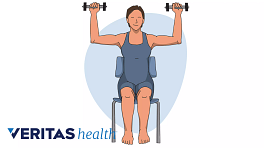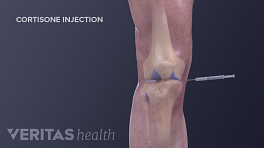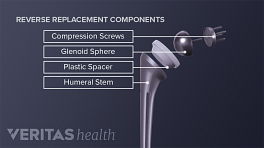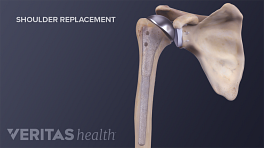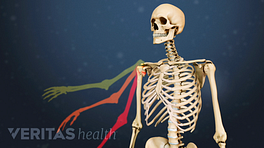Osteoarthritis of the shoulder is a progressively degenerative disease that cannot be reversed. A variety of treatments are used to control pain and to slow the disease progression.
Unfortunately, there is a lack of clinical research that establishes what nonsurgical shoulder arthritis treatments work best for which patients. But this does not mean that the treatments are not available, and it doesn’t mean that they’re not effective, either. And there are an array of effective treatments that can be used. Without definitive clinical guidelines to direct non-operative treatment, it’s very important that the patient and the doctor have a good relationship and speak quite frankly about the hopes and expectations and the risks of treatment and non-treatment.
If a person responds very well to nonsurgical treatment, the degenerative process can be slowed down, the pain can be controlled, and surgery can sometimes be avoided altogether, or at the very least postponed.
So there are very, there are several common non-operative shoulder arthritis treatments, and I’m going to talk about a few of those now. The first would be activity modification. Basically, common sense tells you if something hurts, you don’t want to push through it. The reason why, in shoulder arthritis, all that means, shoulder arthritis just means wear and tear of the shoulder joint, some of the cartilage on that shoulder joint is damaged. And by pushing through the pain, you could be causing additional damage. So if we can decrease the pain, if we can control the pain, and don’t push through the pain through activity modification, often times we can lessen the extent of damage in that joint.
Symptomatically, warm or cold compresses can be used. I often times get the question, “Should I use heat or cold?” And the truth is, is they both work but in different ways. The warmth will help to loosen up the shoulder joint but is not necessarily anti-inflammatory, whereas cold is anti-inflammatory and it can be more useful in decreasing the pain. But both can often be used and they can be alternated within the same day.
Physical therapy is one of the mainstays of treatment, but aggressive physical therapy should be avoided because this can lead to further damage of the joint. But the physical therapists know what’s aggressive and what’s not, so that relationship between the patient and physical therapist will automatically mean that they will be doing what’s best and appropriate for the patient. Basically the physical therapist will work on increasing the range of motion, stabilizing the shoulder, increasing the strength, and developing coping techniques to do certain activities, which are painful, in a different way.
There’s also medications which are often quite useful, but it’s important to know about and discuss with your physician about the side effects or interactions with other medications that you’re using. There are an array of medications. For example, there are certain analgesics, such as simply over-the-counter medications like acetaminophen, which doesn’t have an anti-inflammatory effect; Tylenol really works on just decreasing the perception of pain.
There’s also non-steroidal anti-inflammatory medication. These are called the NSAIDs. And there’s again an array of NSAIDs, such as aspirin, or ibuprofen (known as Advil), or naproxen (like Aleve). There’s also selective COX-2 inhibitors, which have less of a bleeding effect and can be used in certain people. These are prescription-strength medications, such as Celebrex or Mobic. There’s also topical medications. Generally these are NSAIDs, such as diclofenac. The topical medication can be placed over the shoulder itself and is a gel or perhaps a patch that is placed directly on the area that’s painful. Now the important concept here is that the topical medications are only going to treat the area where the patch or gel is placed, and there’s less systemic uptake and therefore less side effects. You can also use topical analgesics, such as counter-irritants, such as wintergreen or eucalyptus, which stimulate the nerve endings and help distract the brain from feeling the pain. There’s some over-the-counter examples, such as Bengay, Icy Hot, Zostrix, which can all be purchased at a pharmacy.
Also glucosamine and chondroitin sometimes can help with joint pain. Although studies are mixed, and some show favorable results but some do not. Some people swear by it. And the truth is it’s probably less harmful, so to try glucosamine and chondroitin is certainly an option and something that can be discussed with your physician.
Injections into the shoulder can also be useful. There are an array of injections, including steroid injections, prolotherapy-type injections, and viscosupplementation. The steroid is going to decrease inflammation. Prolotherapy or PRP injections will help to regenerate degenerative conditions. And then viscosupplementation is the injection of a lubricating agent. It often, actually in all cases made from rooster comb, which lubricates the joint and helps to decrease the friction in that joint. There’s also coping techniques, of course, that can be used, such as relaxation, meditation, visual imagery, biofeedback, and even hypnosis.


